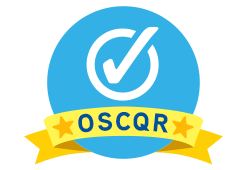Course Plan (ID Services AY21/22)
Course: Course Plan (ID Services AY21/22) | LaneOnline
-
Open all
Close all
-
Instructions: Clicking on the section name will show / hide the section.
-
1
Course Quality Best Practices
- Toggle So you’re planning your online/hybrid/[insert_modality] course!
So you’re planning your online/hybrid/[insert_modality] course!
What do you need to know before you begin to plan your course? In this unit, we will focus on an introduction to best practices as defined through Open SUNY Course Quality Review (OSCQR).-
"To help campuses ensure that their online courses are learner-centered and well designed, a team of SUNY staff and campus stakeholders has designed the OSCQR rubric, a customizable and flexible tool for online course quality review.
The OSCQR rubric specifically targets online course design. The OSCQR rubric is unique and differs from other online course quality rubrics in several ways. It is not restricted to mature online courses. The rubric can be used formatively with new online faculty to help guide, inform, and influence the design of their new online courses, and, it is non-evaluative.
Conceptually, the rubric and the online course review and refresh process are implemented as a professional development exercise designed to guide online faculty to use research-based effective practices and standards to improve the quality, effectiveness, and efficiency of their online course design, rather than as an online course evaluation, or quality assurance procedure."
https://oscqr.suny.edu , May 2021
-
2
Course Plan
- Toggle-
Ten questions to help you ponder what elements or artifacts you wish to improve upon in your course redesign.
-
The OSCQR Self-Assessment is designed as a reference to help you think through critical components of your course.
A course is never complete and improvements will always be available for us to make. Do not try to meet all 50 OSCQR standards at once, instead use this self-assessment to focus on a specific area you find is most critical for your course right now.
-
This course plan guide will help you work through developing your course plan for your new course, or a course you are going to refresh in some way. Use this in conjunction with working with your instructional designer.
-
3
Course Completion
- Toggle
You did it! You completed or improved your Course Plan, and now you have a plan to develop your course. It's good to remember that no course is ever perfect (Yes it's true!), and so anything we've built today is just a stepping stone toward a better course tomorrow.


 In this module, you'll create an NEW plan or an improved plan (working from a previously developed course plan) for how your course will help learners successfully reach the Course Learning Outcomes. This will include considering how course learning
outcomes can be chunked into module-sized pieces, thinking about the module objectives imagine how you might want to measure learning (assessment tools, formative vs summative), existing materials and activities you can use as you move forward, and
listing out the support resources you'll be able to take advantage of along the way. We'll review best practices for course planning and backward design principles.
In this module, you'll create an NEW plan or an improved plan (working from a previously developed course plan) for how your course will help learners successfully reach the Course Learning Outcomes. This will include considering how course learning
outcomes can be chunked into module-sized pieces, thinking about the module objectives imagine how you might want to measure learning (assessment tools, formative vs summative), existing materials and activities you can use as you move forward, and
listing out the support resources you'll be able to take advantage of along the way. We'll review best practices for course planning and backward design principles.